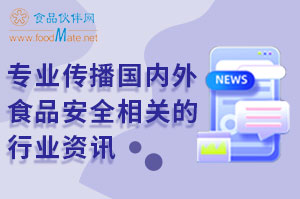只允许用于干酪皮中。专家组认为由于该研究中缺少明确的剂量反应关系,无法确定无明显副作用剂量(NOAEL)、LOAEL以及BMD等可以基于建立ADI值的数值,并且该色素原有的的每日允许摄入量(ADI):每千克体重1.5毫克(mg/kg bw)应予以撤销。
原文报道:
Following a request from the European Commission to the European Food Safety Authority, the Scientific Panel on Food Additives and Nutrient Sources added to Food has been asked to deliver a scientific opinion re-evaluating the safety of Litholrubine BK (E 180) when used as a food colouring substance. The Panel notes that currently permitted use of Litholrubine BK is restricted to cheese rind.
Litholrubine BK (E 180) is a red mono-azo dye authorised as a food additive in the EU and previously evaluated by the Joint FAO/WHO Expert Committee on Food Additives (JECFA), with the latest evaluation in 1987 and by the EU Scientific Committee on Food (SCF) in 1983. JECFA was unable to establish an Acceptable Daily Intake (ADI) (JECFA, 1987), whereas the SCF established an ADI of 0-1.5 mg/kg bw/day (SCF, 1983), based on a No-Observed-Adverse-Effect-Level (NOAEL) of 150 mg/kg bw/day identified in a long-term rat study, the details of which were not described in its report.
The Panel was not provided with a newly submitted dossier and based its evaluation on previous evaluations, additional literature that became available since then and the data available following a public call for data. The Panel noted that not all original studies on which previous evaluations were based were available for re-evaluation by the Panel.
The JECFA evaluation of D&C Red No. 6 (Litholrubine B) considered that there were limited histopathological examinations in two long-term studies in mice and rats that did not allow an unequivocal no-effect level to be determined. In order to comprehensively evaluate this dye, this evaluation requested results from a complete histopathological examination of all dose groups in the long-term mouse study, results of a new long-term study in rats, and an adequate reproductive and developmental toxicity study.
The Panel notes that the only toxicokinetic data available on Litholrubine BK, suggest that there is very limited absorption in animals; most of the orally administered dose being excreted via the faeces and not via the urine. No information was available on Litholrubine B.
The summarised data available for genotoxicity suggest that Litholrubine BK is not mutagenic or clastogenic in vitro.
The conversion of the parent compound by azo reduction in vivo, results in the formation of a sulphonated aromatic amine and a carboxylated amino-naphthol that may not be formed in the standard in vitro genotoxicity tests. Previously, a range of sulphonated aromatic amines was shown in general not to be associated with genotoxicity in vitro and in vivo and the Panel considered that 4-amino-3-hydroxy-2-naphthoic acid would be expected to behave similarly as the closely structurally related amino-naphthol-sulphonic acids which have been shown to be negative.
The Panel also notes that the specifications on the purity of Litholrubine BK permit concentrations of unidentified unsulphonated aromatic amines to be present in concentrations of up to 100 mg/kg Litholrubine BK. Although some aromatic amines may be associated with genotoxicity or even carcinogenicity, the Panel notes that Litholrubine BK was negative in in vitro genotoxicity assays.
A study done in rats for an exposure period of 42 days in males and 17 days in females, in accordance with OECD Test Guideline 422 and GLP conditions, reports decreased general biochemistry parameters in serum and Glutamic Oxaloacetic acid Transaminase (GOT) levels as well as increased kidney weights and histopathological lesions in renal tubular epithelium, for males receiving 1000 mg/kg bw/day Litholrubine BK (OECD SIDS, 1994). No effects were reported on reproductive/developmental toxicity parameters measured in this study. Female rats that received 100 or 1000 mg/kg bw/day showed statistically significant decreases in thymus weights in comparison to the controls. Decreases in thymus weight were not statistically significant in females of the mid-dose group. Relative thymus weight was statistically significantly decreased in females of the low-dose group only. No further statistically significant differences in organ weights were observed in males or females.
Histopathological examinations showed alterations predominantly occurring in the kidney. The lesions included regenerated renal tubular epithelium in male rats receiving 300 mg/kg bw/day or higher. In all treated female groups, the incidence of foamy tubular epithelial cells was increased compared to controls. Although the incidence was similar in all dose groups, the severity of this lesion was slightly increased in the high-dose group only. In addition, increased incidences of necrotic tubular epithelium were seen in all treated groups compared to controls, however no dose-effect relationship either in incidence or severity was observed.
The Panel, having consulted the tables in the original Japanese and the English abstract of this study, concludes that there was a NOAEL of 100 mg/kg bw/day for males and that the NOAEL for females was below 100 mg/kg bw/day (the lowest dose tested). Based on the lack of a clear dose-response relationship in this study the Panel was unable to identify a suitable NOAEL, Low-Observed-Adverse-Effect-Level (LOAEL) or Bench Mark Dose (BMD) to establish an ADI and concludes that the existing SCF ADI of 0-1.5 mg/kg bw/day should be withdrawn.
The Panel concludes that while one case report of cheilitis after exposure from cosmetics containing Litholrubine BK has been documented, no conclusion on the induction of hypersensitivity could be drawn from the limited scientific evidence available.
The Panel notes that the anticipated exposure to Litholrubine BK from an assumed maximum level of use of 100 mg/kg in edible cheese rinds, based on exposure estimates in high consumers of edible cheese rinds, were from 0.02 to 0.06 mg/kg bw/day in children and from 0.01 to 0.03 mg/kg bw/day in adults. The highest level of anticipated exposure (95th / 97.5th) is 1700-fold lower than the identified effect level of 100 mg/kg bw/day in female rats. The Panel further notes that Litholrubine BK can be used following the Quantum Satis (QS) principle and information on actual use levels in edible cheese rinds is not available. The Panel also notes that from the call of usage data on additives, members of the Confederation of the Food and Drink Industries of the EU (CIAA) did not report using Litholrubine BK in cheese products.
Therefore, the Panel considers that it is unlikely there would be a significant safety concern for humans from the current single authorised use of Litholrubine BK in edible cheese rinds.
The Panel further notes that the specifications of Litholrubine BK need to be updated with respect to the percentage of material not accounted for that may represent calcium chloride and/or calcium sulphate as the principal uncoloured components.
The Panel noted that the JECFA specification for lead is < 2 mg/kg, whereas the EC specification is < 10 mg/kg.
详情见:http://www.efsa.europa.eu/en/scdocs/scdoc/1586.htm











 地区:
地区:






 鲁公网安备 37060202000128号
鲁公网安备 37060202000128号



